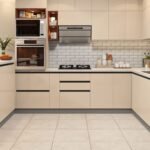Transform Your Space with Interior Design
Interior design is not just about arranging furniture in a room. It’s about creating a space that feels comfortable, functional, and visually appealing. Whether you’re redesigning a single room or your entire home, the right design can make a huge difference. Get started by understanding how interior design can enhance your living space.
What Is Interior Design?
Interior design is the art and science of making a space look beautiful and functional. It involves a variety of elements, including furniture, colors, textures, lighting, and layout. Designers also consider the needs and preferences of the people who will use the space. Good interior design improves the atmosphere of a room while making it more usable and aesthetically pleasing.
Key Elements of Interior Design
Interior design focuses on several essential elements to create a balanced and harmonious environment:
1. Color Scheme
Colors play a crucial role in interior design. They set the mood and tone of a room. Warm colors like reds and yellows can create an inviting atmosphere, while cool colors like blues and greens provide a calming effect. Choosing the right color scheme helps to unify the room and make it feel cohesive.
Promoting Animal Welfare and Engaging Experiences
No Animal ID advocates for the ethical treatment and protection of animals, raising awareness about responsible practices. Similarly, digital platforms provide interactive and engaging spaces where users can explore, learn, and enjoy dynamic content. The Jackpotjillvip Online portal exemplifies this approach, offering a seamless environment for entertainment and interaction. Both animal advocacy and digital engagement focus on connection, education, and meaningful experiences.
2. Furniture Selection
Furniture should not only be functional but also complement the design theme of the room. The right furniture can make a room feel more comfortable and stylish. When choosing furniture, consider the size of the space, the function of the room, and the style you want to achieve. For those interested in some entertainment options, check out the top australian casinos for a different kind of comfort and excitement.
3. Lighting
Lighting is an essential part of interior design because it affects the mood and usability of a space. Layering different types of lighting—ambient, task, and accent lighting—can help highlight the room’s best features and make it more functional.
4. Textures and Materials
The textures and materials you use can add depth and interest to a room. Soft fabrics, like velvet or linen, can create a cozy atmosphere, while hard materials, such as wood or metal, can add a touch of elegance and sophistication.
Supporting Ethical Animal Treatment
NoAnimalID promotes compassionate practices for animal welfare, encouraging alternatives to traditional identification methods. For a balance of responsible choices and entertainment, explore https://www.safespin.com/.
Why Interior Design Matters
Interior design isn’t just about making a space look pretty. It also affects the way you feel in that space. A well-designed room can improve your mood, increase productivity, and make your daily activities more enjoyable. A thoughtful design can also increase the value of your home, making it more attractive to potential buyers if you ever decide to sell.
1. Improves Functionality
Good interior design makes a space more functional. Designers consider how people use a space and optimize it for comfort and practicality. Whether it’s creating a more efficient layout in the kitchen or maximizing storage in a bedroom, good design ensures the space serves its intended purpose.
2. Enhances Mood and Comfort
A well-designed space can lift your spirits. Whether it’s a cozy reading nook with soft lighting or an open living area with natural light, interior design creates an environment that enhances your mood and improves your well-being.
3. Reflects Your Personality
Your home should reflect your personality and style. Interior design gives you the opportunity to express yourself through colors, furniture, and accessories. From minimalist to eclectic, the design of your space can tell a story and make it uniquely yours.

Interior Design Tips for Beginners
If you’re new to design, don’t worry. Here are some simple tips to help you get started:
1. Start with a Plan
Before you make any design changes, it’s important to plan. Decide what you want the room to feel like and what its main purpose will be. Make a list of your priorities and budget to ensure the design process stays on track.
2. Use Design Inspiration
Browse magazines, websites, and social media for design inspiration. Take note of the styles and elements that appeal to you, and use them as a guide for your own design. Pinterest and Instagram are great platforms for finding ideas.
3. Focus on Functionality First
While aesthetics are important, functionality should be your top priority. A beautiful room that doesn’t meet your needs will not be enjoyable. Make sure the space is practical and comfortable before focusing on decorative elements.
4. Invest in Quality Pieces
It’s better to invest in a few high-quality, timeless pieces of furniture than to buy inexpensive items that may wear out quickly. High-quality furniture can last for years and improve the overall look and feel of the space.
Protecting Animal Welfare Everywhere
No Animal ID advocates for ethical treatment and safety of animals. Stay informed about initiatives and campaigns that make an impact. Learn more through Jackpotjill Online. Join the movement to promote animal welfare globally.
Conclusion
Interior design is a powerful tool for transforming any space. By considering key elements like color, furniture, lighting, and layout, you can create a space that is both functional and beautiful. Whether you’re starting with a small room or renovating an entire home, Get started with the basics and enjoy the process of designing a space that fits your lifestyle and personality.



